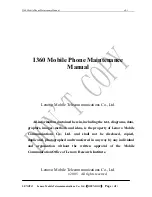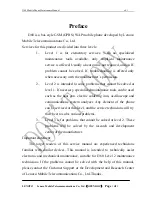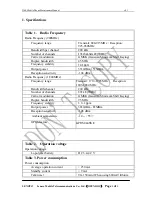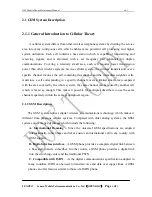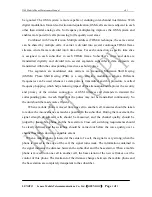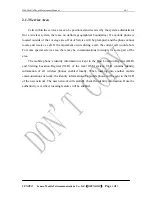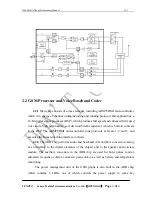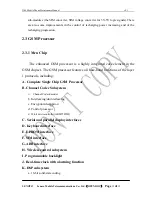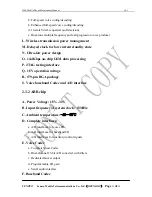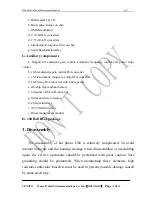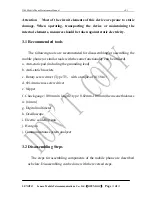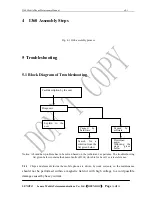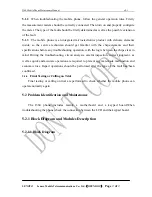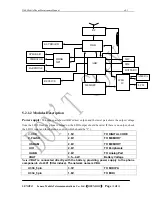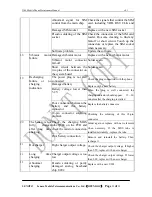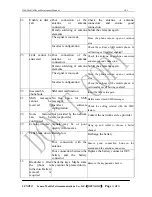
I360 Mobile Phone Maintenance Manual v0.1
be ignored. The GSM system is more capable of enduring inter-channel interference. With
digital modulation, forward correction and equalization, GSM cells are more adjacent to each
other than similar analog cells. So frequency multiplexing improves the GSM system and
enables more powerful calls processing for frequently used areas.
Combined with Time Division Multiple Address (TDMA) technique, the same carrier
can be shared by multiple calls. A carrier is divided into several continuous TDMA frame
streams. And a frame is divided into 8 time slices. For each connection, a specific time slice
is assigned to each subscriber in each TDMA frame. Subscriber’s voice and data are
transmitted digitally and divided into several segments. subscriber’s data segments are
transmitted within the corresponding time slices as burst pulses.
The segments are modulated onto carriers via Gaussian Minimum Shift Keying
(GMSK). Phase Shift Keying (PSK) is a very effective modulation scheme. Different
frequencies can be used whenever a data pulse is transmitted, and this procedure is called
frequency-hopping, which helps reducing impact of the attenuation and improves the security
and privacy of the wireless connection. A GSM wireless call demands to transmit the
corresponding pulse in each frame, but the pulses may not be transmitted continuously. So
the unit should be made more efficient.
When a mobile phone is moved from one cell to another cell, measures should be taken
to reduce the inconvenience as much as possible to the subscriber. During the movement, the
signal strength of adjacent cells should be measured,
and the channel quality should be
judged by the mobile phone and the base station. Cross-cell switching requirements should
be clearly defined, and the switching should be carried out before the voice quality over a
channel has fallen down to a sensible extent.
When a mobile phone is located at the center of a cell, the signal is very strong; when the
phone is moved to the edge of the cell, the signal turns weak. The information contained in
the signal indicates the distance between the subscriber and the base station. When a mobile
phone is moved from one cell to another cell, the base station of the new cell takes over the
control of this phone. The treatment of the distance changes between the mobile phone and
the base station are completely transparent to the subscriber.
LENOVO Lenovo Mobile Telecommunications Co., Ltd.
(
OPEN DOC
)
Page
8
of
8

